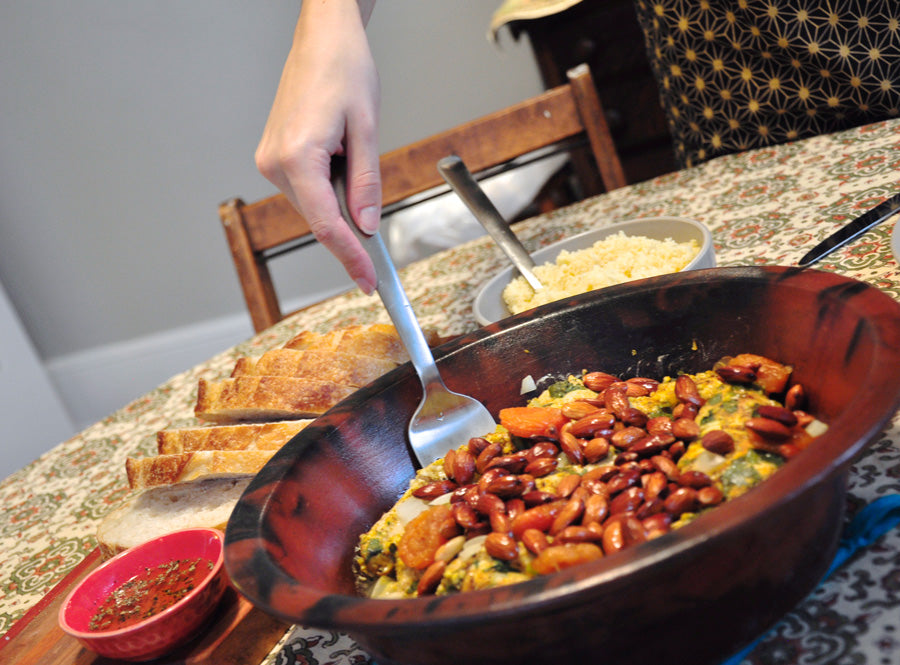The Tagine Pot is a unique cooking vessel that holds a rich history and cultural significance. This humble pot is not just a kitchen accessory but a symbol of the culinary art form of North Africa, especially Morocco. For kitchen professionals and culinary enthusiasts, understanding the origins and uses of the tagine pot can elevate culinary exploration to new heights.

What is a Tagine Pot?
A tagine pot is a slow-cooking dish made of clay or ceramic, known for its conical lid that helps trap steam during cooking. This design contributes to the unique flavors and textures of dishes prepared in it. The pot is both a piece of cookware and a serving dish, making it a versatile addition to any kitchen.
The Historical Origins of the Tagine
The origins of the tagine date back to the Berber people of North Africa. Its use has been traced to the Roman era, reflecting its long-standing presence in the culinary practices of this region. As historians delve deeper, the tagine emerges as a symbol of cultural exchange and adaptation, influenced by the many civilizations that interacted with the Berber tribes.
Symbolism and Cultural Exchange
The tagine pot symbolizes more than just cooking. It reflects the blending of different cultures, due in large part to trade and migration. The culinary techniques preserved within its use tell stories of ancient traders, explorers, and the settled people who adopted and adapted the tagine into their daily meals.
Modern-Day Significance
Today, the tagine pot is celebrated in culinary circles around the world. It is especially prominent in Moroccan cuisine, where it serves as both a cultural icon and a chef’s essential. Professional chefs and home cooks alike are drawn to its ability to create complex, flavor-rich dishes with minimal effort.
Culinary Versatility
The tagine pot is renowned for its ability to cook a wide array of dishes, from hearty stews to savory breads. Its design allows for even heat distribution and moisture retention, ensuring that ingredients are cooked to perfection. Whether used on a stovetop or in an oven, the tagine consistently delivers exquisite dishes.
How to Use a Tagine Pot
For those new to this cooking method, using a tagine pot requires understanding its unique features. It’s important to gradually warm it to avoid cracking and to use it over low heat. Some like to experiment with traditional Moroccan recipes, such as tagine recipes, to truly appreciate the authentic flavors.
Maintenance Tips
Maintaining a tagine pot is straightforward. Avoid sudden temperature changes, hand wash with mild soap, and ensure it is completely dry before storing. For more tips on maintaining cast iron kitchenware, this article on maintaining cookware is an excellent resource.
Tagine in Moroccan Culture
In Morocco, the tagine pot is more than a cooking utensil; it’s a social event. Gathering around a freshly cooked tagine is a cherished tradition, bringing families and communities together. Each region boasts its unique style and ingredients, contributing to Morocco’s diverse culinary heritage.
Celebrations and Festivities
The use of a tagine pot during festivals highlights its cultural significance. From weddings to religious events, tagine dishes are central to Moroccan festivities, showcasing the deep-rooted traditions and pride associated with its cuisine.
Global Influence
The popularity of the tagine pot extends beyond North Africa. Chefs worldwide appreciate its ability to infuse dishes with aromatic spices and tenderize meats. Its influence can be seen in the adaptations made by other cuisines, incorporating the slow-cooking method to create new, exciting flavors.
Famous Tagine Dishes
Iconic dishes like lamb with apricots and chicken with preserved lemons showcase the vibrant and layered flavors achievable with a tagine pot. For those looking to try these dishes, resources like Moroccan chicken tagine recipes provide excellent guidance.
The Future of the Tagine Pot
As more people turn towards traditional and sustainable cooking methods, the tagine pot continues to gain traction. Its environmentally friendly credentials, coupled with its ability to transform simple ingredients into gourmet meals, ensure its lasting appeal in a modern kitchen.
Conclusion
The history and cultural significance of the tagine pot provide rich narratives for those in the culinary profession. As this versatile pot continues to captivate cooks worldwide, its legacy will undoubtedly endure, weaving through the fabric of global culinary traditions.
Further Reading
The world of kitchenware offers various intriguing insights, including unique comparisons that enhance culinary knowledge. Exploring these topics can broaden an understanding of cooking tools and their histories.

FAQ
What is the traditional material used for tagine pots?
Tagine pots are traditionally made from unglazed clay, which helps retain and evenly distribute heat.
- Are tagine pots suitable for modern stovetops?
- Yes, they can be used on most stovetops. However, it is advisable to use a heat diffuser to protect the pot and ensure even cooking.
- What types of dishes are best cooked in a tagine pot?
- Tagines are excellent for slow-cooked stews, particularly those featuring meat, vegetables, and a rich blend of spices.
This article contains affiliate links. We may earn a commission at no extra cost to you.

